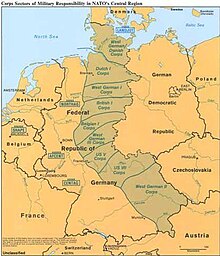
British Army of the Rhine (BAOR) is the name given to two British Army formations of the same name. Both were originally occupation forces in Germany, the first after the First World War and the other, active after the Second World War and during the Cold War, eventually becoming part of NATO's contribution to allied forces there. Both formations had areas of responsibility located around the German section of the River Rhine.

I Corps was an army corps in existence as an active formation in the British Army for most of the 80 years from its creation in the First World War until the end of the Cold War, longer than any other corps. It had a short-lived precursor during the Waterloo Campaign. It served as the operational component of the British Army of the Rhine during the Cold War, and was tasked with defending West Germany.
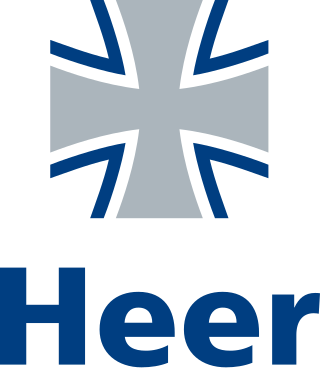
The German Army is the land component of the armed forces of Germany. The present-day German Army was founded in 1955 as part of the newly formed West German Bundeswehr together with the Marine and the Luftwaffe. As of January 2022, the German Army had a strength of 62,766 soldiers.
An army group is a military organization consisting of several field armies, which is self-sufficient for indefinite periods. It is usually responsible for a particular geographic area. An army group is the largest field organization handled by a single commander – usually a full general or field marshal – and it generally includes between 400,000 and 1,000,000 soldiers.

The 3rd Division, also known as The Iron Division, is a regular army division of the British Army. It was created in 1809 by Arthur Wellesley, 1st Duke of Wellington, as part of the Anglo-Portuguese Army, for service in the Peninsular War, and was known as the Fighting 3rd under Sir Thomas Picton during the Napoleonic Wars. The division fought at the Battle of Waterloo, as well as during the Crimean War and the Second Boer War. As a result of bitter fighting in 1916, during the First World War, the division became referred to as the 3rd (Iron) Division, or the Iron Division or Ironsides. During the Second World War, the division fought in the Battle of France including a rearguard action during the Dunkirk Evacuation, and played a prominent role in the D-Day landings of 6 June 1944. The division was to have been part of a proposed Commonwealth Corps, formed for a planned invasion of Japan in 1945–46, and later served in the British Mandate of Palestine. During the Second World War, the insignia became the "pattern of three" — a black triangle trisected by an inverted red triangle.

The 1st Canadian Division is a joint operational command and control formation based at CFB Kingston, and falls under Canadian Joint Operations Command. It is a high-readiness unit, able to move on very short notice, and is staffed and equipped to meet Canada’s military objectives to counter any potential threat.

Allied Joint Force Command Brunssum (JFCBS) is a NATO command with its headquarters at Brunssum, the Netherlands. It was established in 2004, as part of a reorganisation that reduced the number of NATO Military Command Structure headquarters.
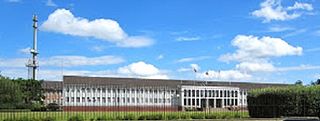
JHQRheindahlen was a military base in Mönchengladbach, North Rhine-Westphalia, Germany active from 1954 to 2013. It functioned as the main headquarters for British forces in Germany and for the NATO Northern Army Group. Latterly it was also known as the Rheindahlen Military Complex, part of Rheindahlen Garrison. It was named after the local village of Rheindahlen, part of the city borough of Mönchengladbach.
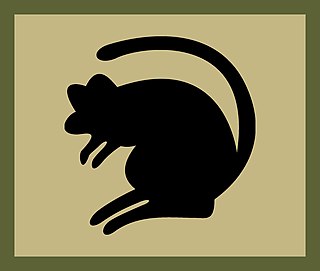
4th Light Brigade Combat Team, previously known as 4th Infantry Brigade and Headquarters North East, and before that as 4th Mechanized Brigade and before that 4th Armoured Brigade is a brigade formation of the British Army, currently based in Catterick, North Yorkshire as part of 1st Division. The brigade, now known as the 'Black Rats', was formed in 1939 and fought in the Second World War in the Western Desert Campaign in North Africa. The Black Rats were subsequently involved in the invasion of Sicily and fighting in Italy before taking part in the Battle of Normandy and the advance through Belgium, Holland and into Germany.
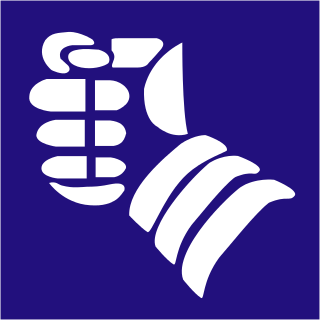
The 20th Armoured Brigade Combat Team, previously the 20th Armoured Infantry Brigade, is an armoured infantry brigade formation of the British Army, currently headquartered at Wing Barracks, Bulford, Wiltshire, as part of the 3rd Division.
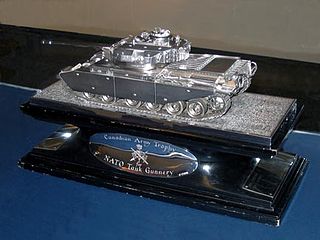
The Canadian Army Trophy (CAT) was a tank gunnery competition established to foster excellence, camaraderie and competition among the armoured forces of the NATO countries in Western Europe.

The 1st Panzer Division(German: "1. Panzerdivision", short: "1. PzDiv") is an armoured division of the German Army. Its headquarter is based in Oldenburg. In the course of the last reorganisation of the Bundeswehr it became the backbone of Germany's newly formed intervention forces with a manpower of 35,000 soldiers. The division is equipped and trained for high intensity combat operations against militarily organized enemies as well as peacekeeping missions. The majority of all German troops assigned to EU-Battlegroups and Nato Response Forces will come from this division. It also represents Germany's permanent contribution to the binational I. German/Dutch Corps.
Canadian Forces Europe was the Canadian Forces military formation in Europe during the Cold War. The CF assisted other NATO allies in watching the military activities of Warsaw Pact and the Soviet Union.

The 1st Corps of the Belgian Army, was a Belgian army corps active during First World War, Second World War, and the Cold War.

Headquarters Allied Force Command Heidelberg was a formation of the North Atlantic Treaty Organization (NATO) responsible for providing deployable joint staff elements (DJSE) in support of NATO operations worldwide. It was headquartered at Campbell Barracks, Germany, and reported to the Joint Force Command Brunssum (JFCBS). During the War in Afghanistan, it provided command and control elements to the International Security Assistance Force (ISAF). It was disbanded on 1 April 2013.
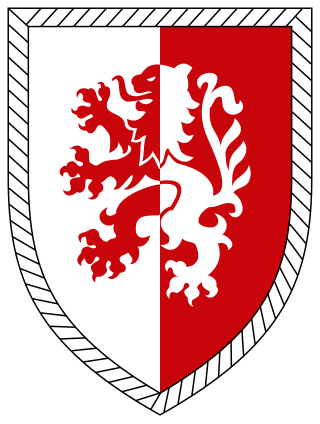
The 2nd Panzergrenadier Division was a West German mechanized infantry formation. It was part of the III Corps of the Bundeswehr, which also incorporated in 1985 the 5th Panzer Division and 12th Panzer Division. III Corps was part of NATO's Central Army Group (CENTAG), along with the Bundeswehr's II Corps and the American V and VII Corps. In the wake of military restructuring brought about by the end of the Cold War, the 2nd Panzergrenadier Division was disbanded in 1994.

Allied Air Forces Central Europe (AAFCE) was the NATO command tasked with air and air defense operations in NATOs Allied Forces Central Europe (AFCENT) area of command.
The Northern Army Group (NORTHAG) was a NATO military formation comprising five Army Corps from five NATO member nations. During the Cold War NORTHAG was NATO's forward defence in the Northern half of the Federal Republic of Germany (FRG). The Southern half of the Federal Republic of Germany was to be defended by the four Army Corps of NATO's Central Army Group (CENTAG). During wartime NORTHAG would command four frontline corps and one reserve corps. Air support was provided by Second Allied Tactical Air Force.
The Central Army Group (CENTAG) was a NATO military formation comprising four Army Corps from two NATO member nations comprising troops from Canada, West Germany and the United States. During the Cold War, CENTAG was NATO's forward defence in the southern half of the Federal Republic of Germany (FRG). The northern half of the FRG was defended by the four Army Corps of NATO's Northern Army Group (NORTHAG). During wartime, CENTAG would command four frontline corps. Air support was provided by Fourth Allied Tactical Air Force.
The following is a hierarchical outline for the structure of the British Army in 1989. The most authoritative source for this type of information available is Ministry of Defence, Master Order of Battle, and United Kingdom Land Forces, HQ UKLF, UKLF ORBAT Review Action Plan, HQ UKLF, 1990.

